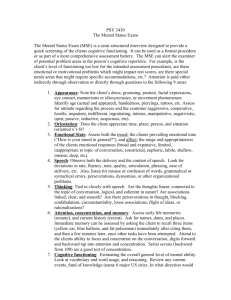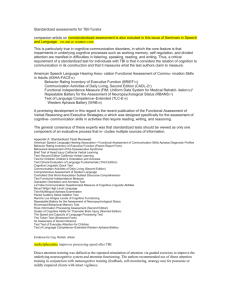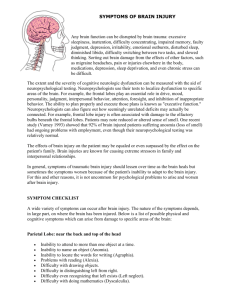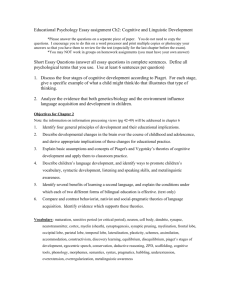TRAUMATIC BRAIN INJURY
advertisement
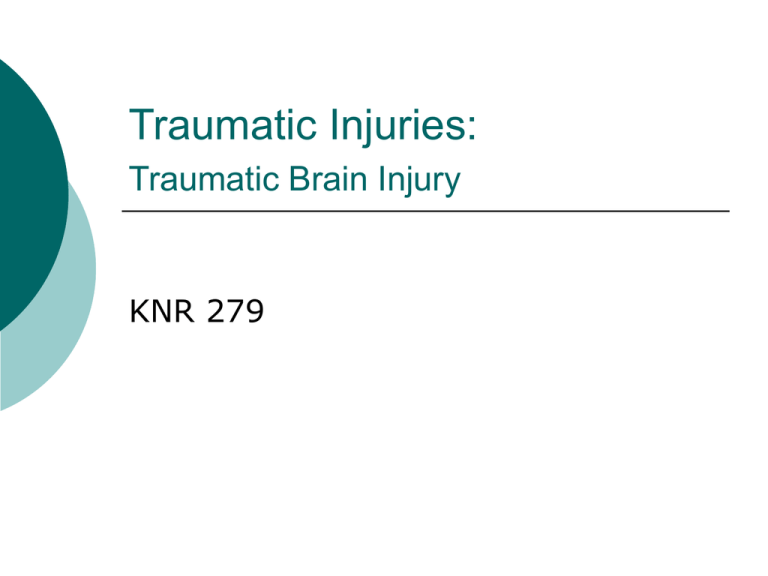
Traumatic Injuries: Traumatic Brain Injury KNR 279 TRAUMATIC BRAIN INJURY Insult to brain, not of degenerative or congenital nature, but caused by an external force that may produce a diminished or altered state of consciousness, which results in an impairment of cognitive or physical functioning Open or closed injury Mild (concussion) to severe (coma) INCIDENCES OF TBI Over 2-5 million in US 1 injury every 15 seconds Many result in life long disability 56,000 killed annually Leading cause of death among Americans under 45 Males 14-24 have highest rate CAUSES OF TBI 50% Motor vehicle crashes 21% Falls 12% Violence 10% Sports & recreation 7% Other Symptoms: Frontal Lobe/Forehead www.braininjury.com Paralysis Problems sequencing for multi-step task Persistence of a single thought Inability to focus on task Mood changes/emotional liability Changes in personality Difficulty with problem solving Inability to express language Parietal Lobe/ Near back & top of head Inability to attend to more than 1 object at a time Inability to name an object Inability to locate words for writing Problems reading Difficulty with drawing tasks Difficulty to distinguish left from right Difficulty with math Difficulty with eye-hand coordination Occipital Lobes: Back of head Defects in vision (visual field cuts) Difficulty locating objects in the environment Problems identifying colors Difficulties with reading & writing Visual illusions (inaccurately seeing objects) Temporal Lobes: Side of head above ears Difficulty recognizing faces Difficulty in understanding spoken words Short term memory loss Interference with long term memory Inability to categorize objects Right lobe can cause persistent talking Increased aggressive behavior Brain stem: Deep within brain Difficulty swallowing food & water Problems with balance & movement Dizziness & nausea Sleeping difficulties Decreased vital capacity in breathing needed for speech Cerebellum: Base of skull Loss of ability to coordinate fine movements Loss of ability to walk Tremors Slurred speech Inability to make rapid movements EFFECTS OF TBI Balance or equilibrium Behavior / emotion Cognitive Physical Seizures Speech / language Glasgow Coma Scale Ranchos Los Amigos Scale Level of Cognitive Functioning / Recovery I = No response, comatose II = Generalized response, nonpurposeful, inconsistent III = Localized response, inconsistent reaction to specific stimuli IV = Confused, agitated, nonpurposeful behavior, inability to process information Ranchos Los Amigos Scale Level of Cognitive Functioning / Recovery V = Confused, inappropriate, nonagitated behavior, alert, highly distractible, responds to simple commands VI = Confused but appropriate behavior, goal-directed, uses external input for direction Ranchos Los Amigos Scale Level of Cognitive Functioning / Recovery VII = Automatic, appropriate behavior, robot like compliance with routine, shallow recall, increased awareness of others VIII = Purposeful, appropriate behavior, alert, oriented, independent functioning Recommended TR Interventions I, II, III = Sensory stimulation, passive stretching, art, movement to music, cognitive retraining, reality orientation IV, V, VI = Aquatic therapy, expressive arts, leisure education, horticulture, behavior management, stretching & flexibility exercises, table & board games Carter, Van Andel, & Robb, 2003 Recommended TR Interventions VII, VIII = Computer games, Community integration, expressive arts, social skills training Carter, Van Andel, & Robb, 2003 Considerations/Accommodations Decrease distractions in environment Provide repetition & consistency Demonstrate new tasks & provide examples Help with planning Behavior management Guidance with appropriate behavior in social situations May not remember that just asked question Considerations/Accommodations Structure Start with simple tasks & small steps Give clear, concrete directions Supervise, may not know own limitations

